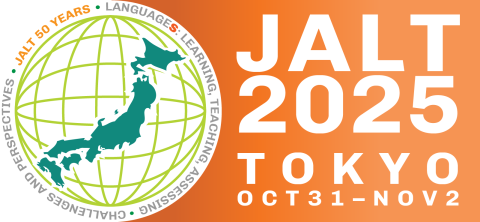Choosing and Using Narrative Texts for Teachers and Learners
Reading books remains the most reliable and enduring means for learners to get second language input and experience (Al-Homoud & Schmitt, 2009; Brumfit, 1981; Gorsuch, Taguchi, & Umehara, 2015). Beyond this technical (albeit important) characterization, reading narrative literature brings to learners a feast of culture, enjoyment, ideas, and potentially, points of language use of interest to them (Bobbitt, 1924). These gifts extend to second language teachers, as these rich texts offer many approaches to instruction for both content and language use (Delanoy, 1991; Hall, 2015). The presenter takes the position that participants (including the presenter) benefit from the experience of knowledgeable peers and thus the first part of the session will address the kinds of outcomes we ourselves set for using narrative texts with learners. In other words, what do we want learners to get out of interacting with narrative texts (Hall, 2015; Swaffar & Arens, 2005)? It often seems that once we propose outcomes, our own text selection processes become more clear. For instance, we may set an outcome of giving learners experience with different types of narrative texts, such as: 1. texts with strongly developed characters, 2. texts with narrators whose role is not clear, 3. texts with plot twists, and 4. texts where setting and mood feature prominently (McRae, 1991). We may propose this outcome because we think learners will be intrigued by, and perhaps motivated by, the kinds of language use clues that authors use to create the effect they wish (Brumfit, 1981; McRae, 1991; Swaffar & Arens, 2005). When working with a stated outcome such as this, text selection seems less overwhelming and more directed. Teachers can, over time, do some serious curation of texts they might wish to use. This part of the session will close with both presenter’s and participants’ favorite sources for texts, and their own techniques of text collection and curation.
In the second half of the session, the question of what to ask learners to do with the texts will be taken up. A common pattern is we have learners read, often out of class as homework, and then answer some comprehension questions, ending with a discussion where we hope that we do not end up just explaining the text to a sea of faces (Hall, 2015; McRae, 1991). Missing from this equation is agency for learners. Narrative texts have riches to offer, and time and again, given the chance, learners show that what they take to be interesting or compelling is not at all what the teacher expected (Gorsuch & Taguchi, 2010). The presenter will outline some simple methodologies for using learners’ comprehension processes to unlock and explore areas of emerging learner interest. The cornerstones will be in-class reading and leading learners through multiple engagements with 500 to 700-word sections of text, with written and then verbal learner self-reports afterwards. As learners gain experience with a text, their comprehension constructs and reconstructs, and content and language features of text they could not have noticed in their first reading, come to notice (Delanoy, 1991; Gorsuch & Taguchi, 2010; Moody, 1987; Taguchi, Gorsuch, & Mitani, 2021). Teachers can then take up the things learners notice to amplify them, always a first step to help learners make connections to the text at hand, to texts they have already read, and to texts they may read in future.
Presenter website: https://gretareaders.com/
References
Al-Hmoud, F., & Schmitt, N. (2009). Extensive reading in a challenging environment: A comparison of extensive and intensive reading approaches in Saudi Arabia. Language Teaching Research, 13, 383–401.
Bobbitt, F. (1924). How to make a curriculum. Cambridge, MA: The Riverside Press.
Brumfit, C. (1981). Reading skills and the study of literature in a foreign language. System, 9(1), 243-248.
Delanoy, W. (1991). Assessing textual understanding and literature learning in ESL. In C. Brufmit (Ed.). Assessment in literature teaching (pp. 106–113). London: MacMillan.
Gorsuch, G. J., & Taguchi, E. (2010). Developing reading fluency and comprehension using repeated reading: Evidence from longitudinal student reports. Language Teaching Research, 14(1), 27–59.
Gorsuch, G., Taguchi, E., & Umehara, H. (2015). Repeated reading for Japanese languagelearners: Effects on reading speed, comprehension, and comprehension strategies. The Reading Matrix, 15, 18–44. Available: http://readingmatrix.com/files/13-l624by2v.pdf
Hall, G. (2015). Literature in language education (2nd ed.). Houndsmills, U.K.: MacMillan Palgrave.
McRae, J. (1991). Literature with a small ‘l’. London: MacMillan Publishers.
Moody, H. L. B. (1987). Literary appreciation (2nd ed.). Harlow, United Kingdom: Longman.
Swaffar, J., & Arens, K. (2005). Remapping the foreign language curriculum. New York: The Modern Language Association of America.
Taguchi, E., Gorsuch, G., & Mitani, K. (2021). Using repeated reading for reading fluency development in a small Japanese foreign language program. Pedagogies. doi: https://doi.org/10.1080/1554480X.2021.1944866


